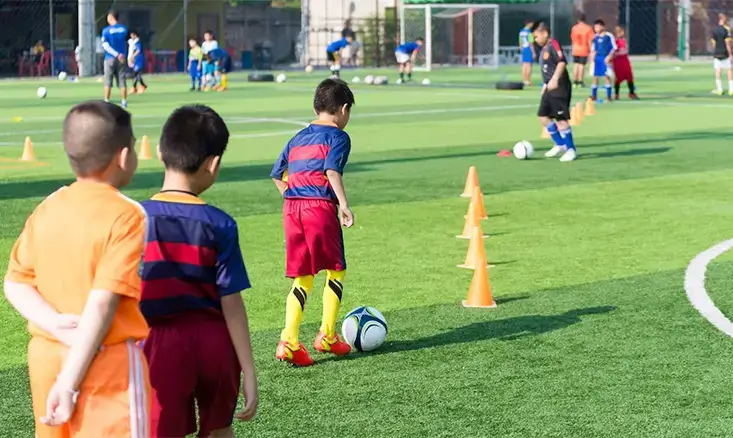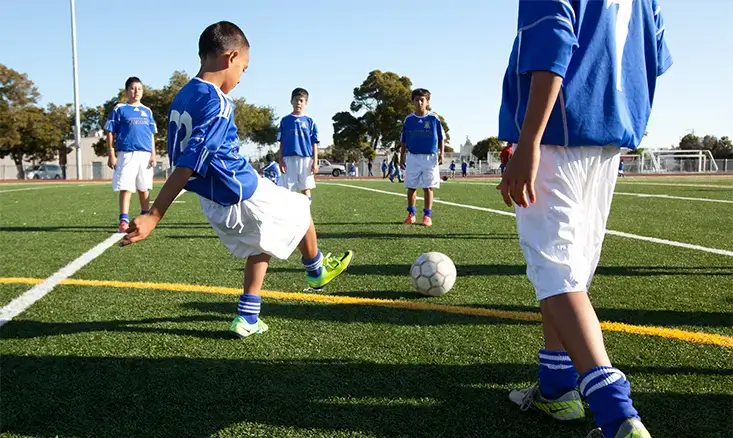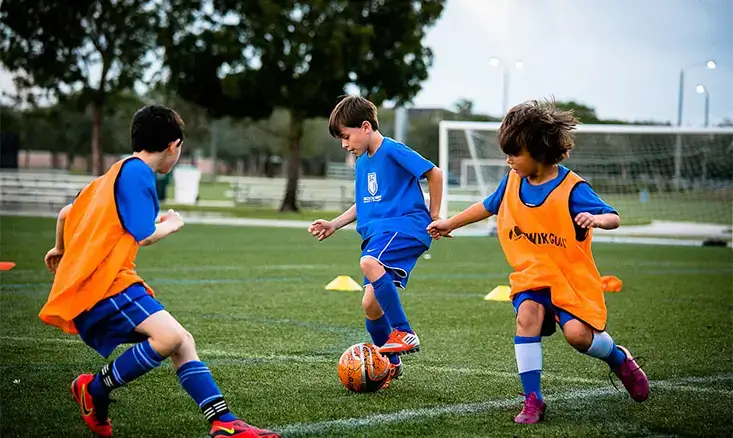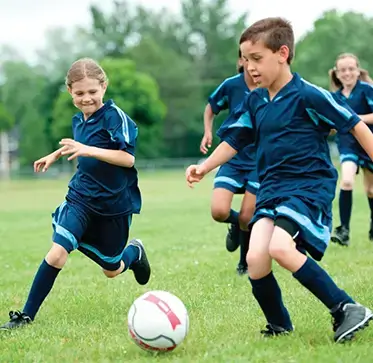CRFC BLOGS
LATEST BLOGS & NEWSLETTERS
9 Soccer Defending Drills for Defensive Play
Defense in soccer is as crucial as scoring goals. A strong defense often becomes the backbone of a winning team. This article aims to introduce coaches and young players to nine essential soccer defending drills. These exercises are designed to enhance defensive soccer skills, suitable for various levels, including kids, beginners, and U12 players.
Basic Defensive Skills Drills for Beginners
Drill 1: Basic Stance and Movement
Mastering the basics is the first step to becoming a great defender. This drill focuses on the defensive stance—feet shoulder-width apart, knees slightly bent, and body weight on the toes. Players practice moving side to side and forward and backward, maintaining this stance. This foundational skill is critical for effective soccer defense, especially for beginners.
Drill 2: Shadow Defending
Shadow defending is an excellent way for beginners to learn about marking and tracking opponents without contact. One player acts as the shadow, mimicking the movements of their partner as closely as possible. This drill helps improve reaction time and defensive footwork, which is vital for soccer defensive drills at all levels.

Defensive Drills for Kids (U12)
Drill 3: Funnel Game
The Funnel Game teaches young players to reduce the attacking space for opponents effectively. In a small area, attackers try to dribble through a “funnel” formed by defenders. It’s a playful way to teach kids about soccer defensive positioning drills, helping them understand how to control space on the field.
Drill 4: Gate Passing Defense
This engaging drill involves setting up small gates around the pitch. Defenders must prevent attackers from passing the ball through these gates, focusing on interception skills. It’s a dynamic approach to soccer defense drills for beginners and kids, making the learning process both fun and competitive.

Defensive Transition and Recovery Drills
Drill 5: Quick Switch Play
Soccer defensive transition drills like Quick Switch Play train players to move swiftly from offense to defense. This drill involves a quick change in roles after losing possession, emphasizing speed and immediate pressure on the ball.
Drill 6: Recovery Run Challenge
Recovery is a crucial aspect of defense. This drill simulates scenarios where defenders must hustle back to their positions after an attack breaks down. It focuses on quick, efficient movement and is an essential part of soccer defensive recovery drills.

Defensive Clearing and Positioning Drills
Drill 7: Clearing Under Pressure
Effective clearing is critical under pressure. This drill challenges defenders to clear the ball from within a marked zone while under pressure from attackers. It’s a practical component of soccer defensive clearing drills, teaching players to remain calm and make smart decisions under duress.
Drill 8: Positional Awareness Grid
Positional awareness is key to effective defending. This drill uses a grid system where players must move to different zones according to the coach’s instructions. It’s an excellent way to incorporate soccer defensive structure drills, a cornerstone of summer soccer camps, helping players understand their roles and positioning in various game situations.

Advanced Defensive Tactics
Drill 9: Defensive Structure and Formation
Understanding the bigger picture of team defense is crucial. This advanced drill focuses on defensive formations and structures, teaching players about soccer defensive shape drills. It helps teams learn how to move as a unit and maintain a solid defensive line.
Conclusion
These nine drills provide a comprehensive guide to developing robust defensive skills in soccer. Regular practice of these soccer defensive drills, tailored for kids, beginners, and U12 players, will build a strong defensive foundation and enhance overall team performance. Remember, a strong defense is the first step toward winning games!
Register to our Academy Teams (2024-25) to master soccer skills and techniques.
FAQs
How to defend with 4 at the back?
Defending with 4 at the back involves a defensive structure where two center-backs work in tandem with full-backs to create a solid defensive line. The players coordinate movement, stay in position, and shift as a unit to block attacks effectively.
How to teach kids to defend in soccer?
Teaching kids to defend in soccer involves introducing them to basic defensive stances and movements, such as side-to-side shifts and tracking attackers. Fun drills like the Funnel Game and Gate Passing Defense help children learn defensive positioning and interception skills in a playful way.
What are the 5 principles of defending in soccer?
The five principles of defending include pressure, cover, balance, compactness, and control. These principles guide defenders to press opponents, provide backup, maintain structure, stay close together, and take control of the game by blocking or intercepting passes.
How to prevent through balls in soccer?
To prevent through balls, defenders should focus on marking attackers closely and maintaining a strong defensive line. Drills like Gate Passing Defense help players practice interception and positioning, ensuring they stay aware of potential through balls.
How is the 5-3-2 formation defending?
The 5-3-2 formation involves five defenders forming a solid backline, while three midfielders provide additional cover and support. This setup helps the team maintain a compact structure, covering wide areas and blocking central attacks, ensuring a balanced and effective defense.

Did you find this useful?


